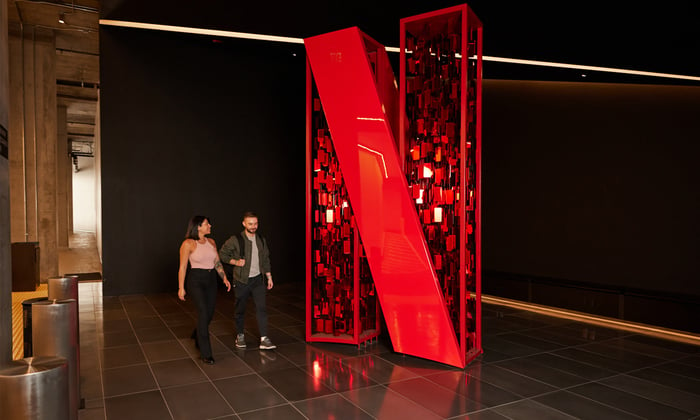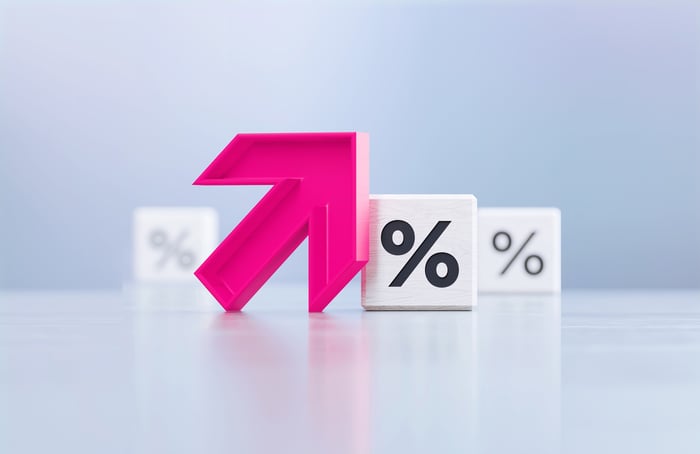3 High-Yield Dividend Stocks to Buy With $1,000 and Hold Forever
If you are looking for reliable income in today’s lofty market, this trio should provide you with the sustainable yields you seek.
The S&P 500 index (^GSPC 0.53%) has a miserly yield of just 1.2% or so today. That’s a number that you can beat pretty easily, but you want to make sure you do it with reliable dividend stocks. There are some companies that have huge yields, but the risk involved isn’t worth it.
That’s why you’ll probably prefer to buy (and likely hold forever) companies like Realty Income (O 1.13%), Prologis (PLD 2.40%), and UDR (UDR 0.50%). Here’s a quick look at each of these high-yield dividend stocks.
1. Realty Income is boring, which is a good thing
Realty Income is the largest net lease real estate investment trust (REIT) you can buy. It owns over 15,600 properties and has a market cap that is more than three times larger than its next-closest peer. Add in a dividend yield of 5.4% and a 30-year streak of annual dividend increases and you can see why dividend investors would like this stock.
The key, however, is how boring a business it is. It starts with the net lease approach. A net lease requires the tenant to pay for most property-level expenses. That saves Realty Income cost and hassle, leaving it to, in a simplification of the situation, sit back and just collect rent. On top of that, the company’s primary focus is retail properties, which are fairly easy to buy, sell, and release if needed. But that isn’t the end of the story, either, since Realty Income is also geographically diversified, with a growing presence in Europe.
Slow and steady is the name of the game for Realty Income, which makes sense given that the REIT has trademarked the nickname “The Monthly Dividend Company.” This high yielder isn’t going to excite you, but that’s basically the point. Investing $1,000 into Realty Income will leave you owning roughly 16 shares.
2. Prologis is building from within
Prologis is another industry giant, this time focused on the industrial asset class. It is one of the largest REITs in the world, with a market cap of more than $100 billion. (It’s about twice the size of Realty Income, which has a roughly $50 billion market cap.) The dividend yield is around 3.5%, which isn’t nearly as nice as what you’d get from Realty Income, but there’s more growth opportunity. To put a number on that, Realty Income’s dividend has grown 45% or so over the past decade while Prologis’ dividend has increased by over 150%.
Like Realty Income, Prologis offers global diversification. It has operations in North America, South America, Europe, and Asia, with assets in most prominent global transportation hubs. It has increased its dividend annually for 12 years, with a high likelihood of years of dividend growth ahead. That’s because the REIT has a $41.5 billion opportunity to build new properties on land it already owns. What’s exciting now is that the dividend yield happens to be near the high end of the range over the past decade, suggesting today is a good time to jump aboard. A $1,000 investment will allow you to buy eight shares of the stock.
3. UDR is diversified and provides a basic necessity
UDR is an apartment landlord, offering the basic necessity of shelter. That’s not going to go out of style anytime soon. The company underwent a painful overhaul a few years back when it sold a portfolio of lower quality apartments, leaving it focused on its remaining and better-positioned assets. This was a good move for the REIT, but it led to a dividend reset (the painful part for shareholders). However, the dividend has been growing ever since, with an annual streak that’s now up to 16 years. There’s no reason to believe another cut is in the cards.
What dividend lovers get now, however, is fairly attractive. For starters, the portfolio is well-diversified by geographic region in the United States and by quality (A and B level assets only, the fixer-uppers it once owned are gone). Technology has been an increasingly important aspect of the business, with UDR working to use the internet to lease and serve tenants more nimbly. Essentially, UDR is a great way to get diverse exposure to apartments.
UDR’s dividend yield is 4.7% right now, which is fairly high for the REIT and well above the REIT average of around 3.8%. If you want to own a REIT that provides a basic necessity, UDR is worth looking at today. A $1,000 investment will get you roughly 27 shares.
Three high-yield, buy-and-hold options for your portfolio
If you are focused on yield, Realty Income is likely to be the most appropriate choice for your portfolio. If you like dividend growth, take a look at Prologis. And if you are fond of companies that provide basic services that everyone needs, that would be UDR. All three have lofty yields and are worth buying and holding for the long term.
Reuben Gregg Brewer has positions in Realty Income. The Motley Fool has positions in and recommends Prologis and Realty Income. The Motley Fool recommends the following options: long January 2026 $90 calls on Prologis. The Motley Fool has a disclosure policy.











